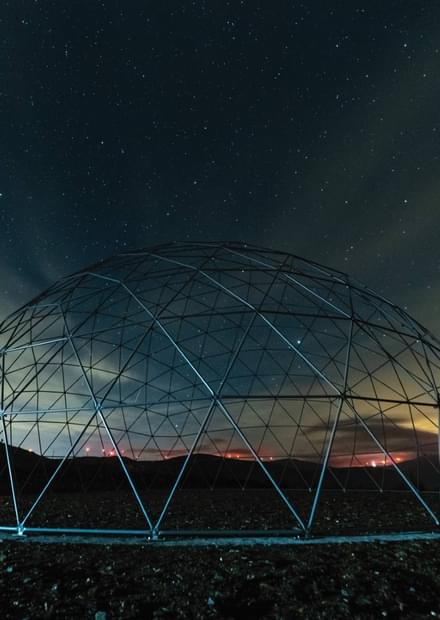The dazzling protected landscape of Açor Mountain is the home of 5 enchanting Schist Villages. A pristine nature that takes us back in time, embraced by a soul-soothing silence.
Benfeita
Seen from Fonte das Moscas, the white houses of Benfeita contrast with the Torre da Paz, which stands imposingly with its schist walls. Situated between Côja and the Protected Landscape of Serra do Açor, this quiet mountain village is deeply religious. In addition to the Igreja Matriz de Santa Cecília, you will find in Benfeita and on the outskirts no fewer than six chapels.
But don't let yourself be stuck with the religious customs of the land. Venture along the Caminho do Xisto da Benfeita and you can discover the waterfalls of Fraga da Pena or wander through the leafy Mata da Margaraça, classified as a Nature Reserve.
When it's time to return, don't forget to bring a souvenir. Go to the Aldeias do Xisto store, go to the house of the poet José Simões Dias, or visit Feltrosofia, where art is made from the purest wool. Here, typical objects made with traditional knowledge will give you an original representation of Benfeita.
Aldeia das Dez
A charming little village overlooking the river Alvôco. The entire village seems like a lingering viewpoint with spectacular views over the surrounding mountains. Breathe in its pure air, learn about its rich history and make sure you explore every nook and cranny. The views from the village viewpoint will take the breath away from any visitor who appreciates the stunning scenery of the Serra da Estrela. Here, every house, every street and every square is a viewpoint.
Built predominantly of granite, Aldeia das Dez has an impressive architectural heritage, particularly the Mother Church, whose interior is decorated with sumptuous gilded carvings.
Many carvers and gilders once lived in the village, who graced the village with their work. The gilded carving in the Mother Church is a good example of this, along with the sculptures and paintings that adorn the interior of the building. But the village’s charms are more than that: there are also the people and the landscape.
Those who cannot resist good confectionery will find the village’s traditional cakes, coscoréis and cavacas made in the Aldeia das Dez style. Enjoy them and also try a compote or medronho liqueur made from the fruit of the arbutus tree, which is abundant in the area.
Fajão
Among deep valleys and gigantic quartzite rocks, Fajão invites us to walk slowly. In its streets you’ll find warm people and houses with innovating designs which still maintain their tradition. Stroll through all of them and don’t miss the chance to see the church’s square, the Old Fountain, the jail square and the swimming pool on top of the village. At the Monsenhor Nunes Pereira Museum you will discover the old village and the mountain which was the daily route of people and traders who had their meeting point in Feijão. Follow their example and also try to have a meal at the “O Juiz” restaurant where traditional food like codfish and kid are the specialities. Alternatively, you can replace the peace of the village with the adrenaline of the rocks around it, ideal for those who enjoy open air sports.
Sobral de São Miguel
The village slogan “Heart of the schist” is not innocent. This village may be one of the largest groups of schist buildings in Portugal. However, by far the majority of them have been rendered and painted, mostly white.
Schist is exported from here around the world, but the raw material doesn’t stop here.
To begin with the gastronomic heritage – in the village you can appreciate the delights of sour cherries, pica de chouriço, sardines, salt cod, honey and bread baked in a wood burning oven – but there is also a cultural and artistic heritage to discover.
Sobral de São Miguel also offers some pleasant walks. Whether strolling down the roads and alleyways of the village, or following the course of the Ribeira do Porsim (Porsim stream).
The many new buildings all around the outskirts make it advisable to direct your walks to the old centre. There, the houses rise in tiers up the slopes, following the twists and turns of the stream. The village streets almost always run parallel to the stream, and are criss-crossed by many stepped alleyways or steep lanes finding their way around the dwellings. These almost always jostle together with no room for back gardens. The two or three-storey buildings shade the streets, even during the heat of the day.
Vila Cova de Alva
A noble village of exemplary dignity, characterised by the scale of its buildings and public spaces. The river Alva, which flows in the valley below, glistens with purity and freshness. All around stand the mountains that encircle and protect Vila Cova de Alva, inviting a stroll in the dappled shadow of their lush vegetation.
This is the Schist Village which has the largest number of monuments and historic buildings, due to the fact that a religious order established a monastery here. Stroll or rest in the village’s public spaces such as Largo da Igreja Matriz and Largo do Pelourinho, where there are two 17th century mansions. Discover the many religious and civil monuments such as the manor houses Solar dos Condes da Guarda, Solar Abreu Mesquita, the building of the Osório Cabrals or the 16th century street.
And then there is the river Alva with its river beach, a refreshing temptation on hot days.


